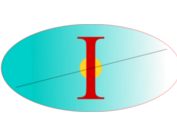Citation:
| ansbacher2012.pdf | 1.66 MB |
Abstract:
Forster Resonance Energy Transfer (FRET) between fluorescent proteins (FPs) is widely used to construct fluorescent sensor proteins, to study intracellular protein-protein interactions and to monitor conformational changes in multidomain proteins. Although FRET depends strongly on the orientation of the transition dipole moments (TDMs) of the donor and acceptor fluorophores, this orientation dependence is currently not taken into account in FRET sensor design. Similarly, studies that use FRET to derive structural constrains typically assume a kappa(2) of 2/3 or use the TDM of green fluorescent protein, as this is the only FP for which the TDM has been determined experimentally. Here we used time-dependent density functional theory (TD-DFT) methods to calculate the TDM for a comprehensive list of commonly used fluorescent proteins. The method was validated against higher levels of calculation. Validation with model compounds and the experimentally determined TDM of GFP shows that the TDM is mostly determined by the structure of the pi-conjugated fluorophore and is insensitive to non-conjugated side chains or the protein surrounding. Our calculations not only provide TDM for most of the currently used FPs, but also suggest an empirical rule that can be used to obtain the TDMs for newly developed fluorescent proteins in the future.
Notes:
RBaer-Publication



